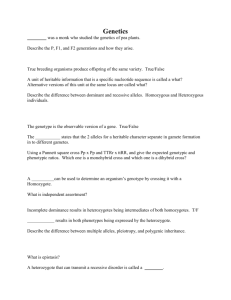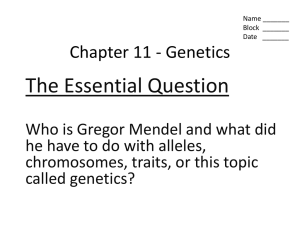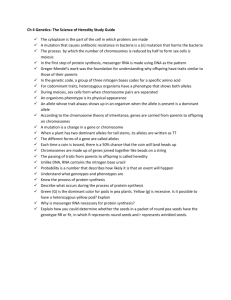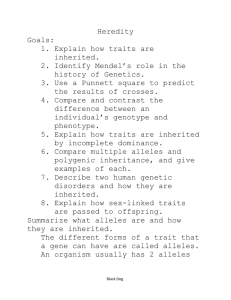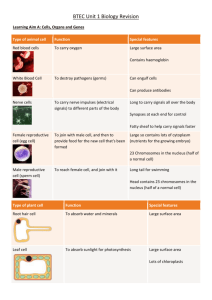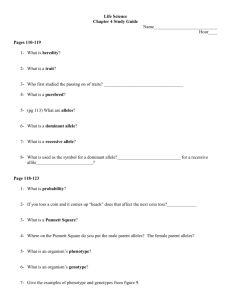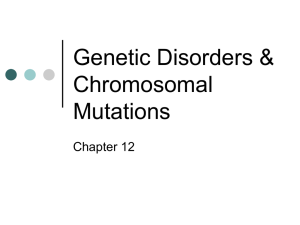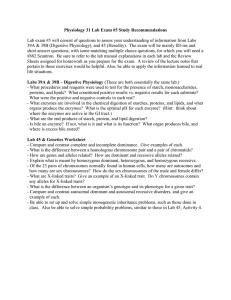Biology Revision Notes – Digestion And Genetics
advertisement
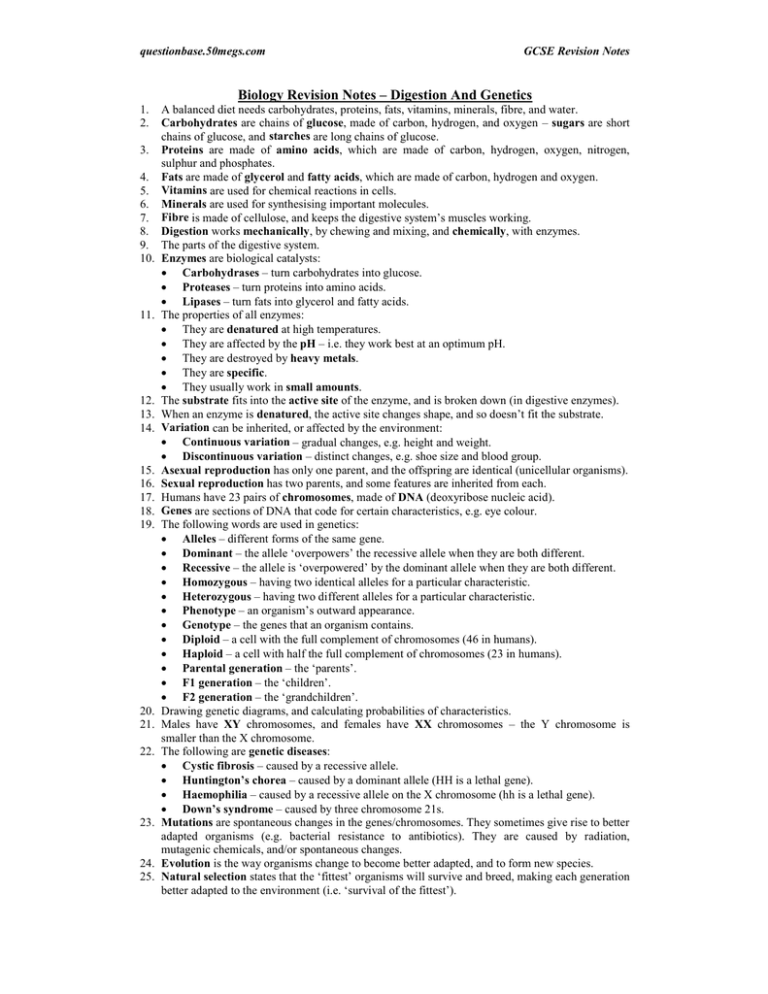
questionbase.50megs.com GCSE Revision Notes Biology Revision Notes – Digestion And Genetics 1. 2. 3. 4. 5. 6. 7. 8. 9. 10. 11. 12. 13. 14. 15. 16. 17. 18. 19. 20. 21. 22. 23. 24. 25. A balanced diet needs carbohydrates, proteins, fats, vitamins, minerals, fibre, and water. Carbohydrates are chains of glucose, made of carbon, hydrogen, and oxygen – sugars are short chains of glucose, and starches are long chains of glucose. Proteins are made of amino acids, which are made of carbon, hydrogen, oxygen, nitrogen, sulphur and phosphates. Fats are made of glycerol and fatty acids, which are made of carbon, hydrogen and oxygen. Vitamins are used for chemical reactions in cells. Minerals are used for synthesising important molecules. Fibre is made of cellulose, and keeps the digestive system’s muscles working. Digestion works mechanically, by chewing and mixing, and chemically, with enzymes. The parts of the digestive system. Enzymes are biological catalysts: • Carbohydrases – turn carbohydrates into glucose. • Proteases – turn proteins into amino acids. • Lipases – turn fats into glycerol and fatty acids. The properties of all enzymes: • They are denatured at high temperatures. • They are affected by the pH – i.e. they work best at an optimum pH. • They are destroyed by heavy metals. • They are specific. • They usually work in small amounts. The substrate fits into the active site of the enzyme, and is broken down (in digestive enzymes). When an enzyme is denatured, the active site changes shape, and so doesn’t fit the substrate. Variation can be inherited, or affected by the environment: • Continuous variation – gradual changes, e.g. height and weight. • Discontinuous variation – distinct changes, e.g. shoe size and blood group. Asexual reproduction has only one parent, and the offspring are identical (unicellular organisms). Sexual reproduction has two parents, and some features are inherited from each. Humans have 23 pairs of chromosomes, made of DNA (deoxyribose nucleic acid). Genes are sections of DNA that code for certain characteristics, e.g. eye colour. The following words are used in genetics: • Alleles – different forms of the same gene. • Dominant – the allele ‘overpowers’ the recessive allele when they are both different. • Recessive – the allele is ‘overpowered’ by the dominant allele when they are both different. • Homozygous – having two identical alleles for a particular characteristic. • Heterozygous – having two different alleles for a particular characteristic. • Phenotype – an organism’s outward appearance. • Genotype – the genes that an organism contains. • Diploid – a cell with the full complement of chromosomes (46 in humans). • Haploid – a cell with half the full complement of chromosomes (23 in humans). • Parental generation – the ‘parents’. • F1 generation – the ‘children’. • F2 generation – the ‘grandchildren’. Drawing genetic diagrams, and calculating probabilities of characteristics. Males have XY chromosomes, and females have XX chromosomes – the Y chromosome is smaller than the X chromosome. The following are genetic diseases: • Cystic fibrosis – caused by a recessive allele. • Huntington’s chorea – caused by a dominant allele (HH is a lethal gene). • Haemophilia – caused by a recessive allele on the X chromosome (hh is a lethal gene). • Down’s syndrome – caused by three chromosome 21s. Mutations are spontaneous changes in the genes/chromosomes. They sometimes give rise to better adapted organisms (e.g. bacterial resistance to antibiotics). They are caused by radiation, mutagenic chemicals, and/or spontaneous changes. Evolution is the way organisms change to become better adapted, and to form new species. Natural selection states that the ‘fittest’ organisms will survive and breed, making each generation better adapted to the environment (i.e. ‘survival of the fittest’).

